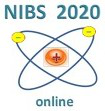Speaker
Description
Negative ion production in the hydrogen plasma of a fusion grade negative ion source relies on the surface production mechanism. Surface production is associated with the resonance electron capture (REC) by neutral hydrogen atoms and ions impinging on a low work function surface. In order to reduce the surface work function, a Cesium (Cs) layer is deposited in situ primarily on the first grid of the negative ion extraction system called, plasma grid (PG). For that Cs vapour is injected into the ion source volume, kept under vacuum to avoid reactions of Cs with atmospheric gases and moisture. Too much presence of Cs inside the source possesses a serious maintenance issue because of its deposition on the actively cooled surfaces, mainly in the extractor system and leads to high voltage breakdown among the grids kept at different voltage levels. Therefore, optimization of Cs injection to maintain low surface work function is the need to achieve an efficient negative ion source performance. There is no vacuum compatible probe suitable for ion source application, available which can measure three Cs relevant parameters: (a) Cs flux on a surface, (b) Cs coverage on the surface and (c) correspondingly the work function of the surface in situ and can establish a correlation among all these three parameters.
The present work deals with the development of a vacuum compatible probe for in situ measurement (PRISM) of work function and Cs dynamics, including Cs flux and Cs coverage on a surface.

